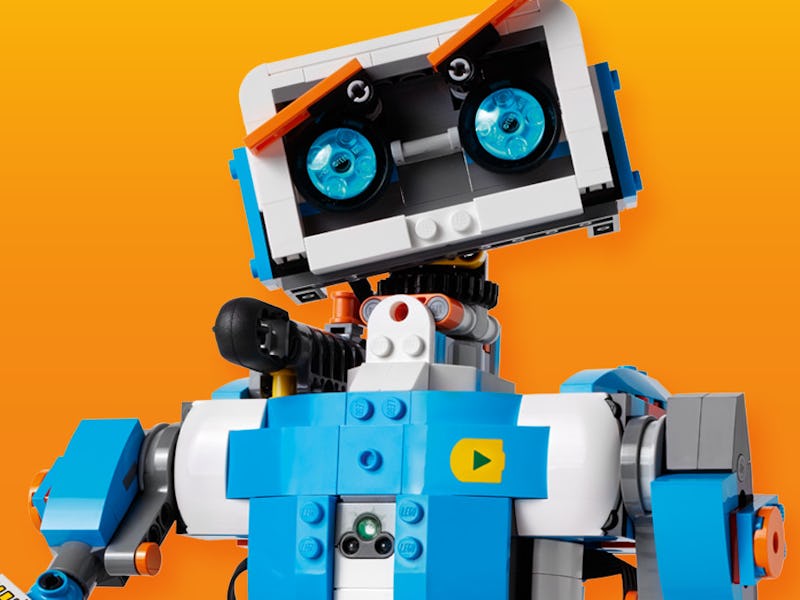Tired of building Lego by hand? In just five years’ time, you could leave a robot to take over. A new interactive timeline this week from search marketing services Blueclaw shows how artificial intelligence will change a number of industries in a short span of time. Teaching a robot to play with toys may seem like a fruitless endeavor, but it would represent a major breakthrough in the rush to build job-automating machines.
“While people (like frustrated amateur builder Jacques Mattheij) have already used neural networks to help sort and categorize their enormous Lego collections — the idea of an artificial intelligence being able to replicate the imagination needed to create something new and unscripted out of Lego pieces alone remains elusive,” James Tweedle, content manager for Blueclaw and the team’s artificial intelligence specialist, tells Inverse. “The idea of a ‘lego-building’ robot might seem left-field, but if created — it will prove that A.I. has overcome one of its biggest hurdles.”
The interactive timeline uses the predictions outlined by researchers from the University of Oxford’s Future of Humanity Institute and Yale University’s department of political science. The June 2017 paper, titled “When Will AI Exceed Human Performance? Evidence from A.I. Experts,” surveyed machine learning experts across the industry about when they thought machines could beat humans at various tasks.
The results were fascinating. Machines will beat language translators by 2024, truck drivers by the 2027, bestselling authors by 2049, and retail workers by 2031 — a change that could come far sooner with Google’s announcement this week that its Assistant can place natural language phone calls with ease. Overall, experts predicted machines will beat humans in many cases in the next 40 years, with a 50 percent chance that machines beat humans in every task in just 45 years. Asian researchers anticipate these changes much sooner than North American researchers.
A view of the interactive chart in operation.
The team also predicts that by the year 2023, a machine will be able to “physically assemble any Lego set given the pieces and instructions, using non-specialized robotics hardware.” The paper cites University of California Berkeley research that showed a machine joining two Lego pieces together in 2016 through reinforcement learning. A Lego-building bot that can demonstrate these learning abilities could pave the way for the even bigger advancements outlined above.
“One of the biggest challenges for any artificial intelligence is the idea of ‘bottom-up’ learning — the ability for a machine mind to plan, evaluate and respond to challenges, rather than simply following ascribed processes,” Tweedle says. “It is this evolution, through the use of neural networks, that poses the greatest threat to human labor in the future — for it is the biggest advantage we still have over machines.”
This shift will have big consequences for the labor market. Campaigners like Scott Santens and presidential candidate Andrew Yang have called for a universal basic income to give people a standard of living as automation takes over more jobs. Lego bricks may look like child’s play, but it could fundamentally reshape the global economy.
